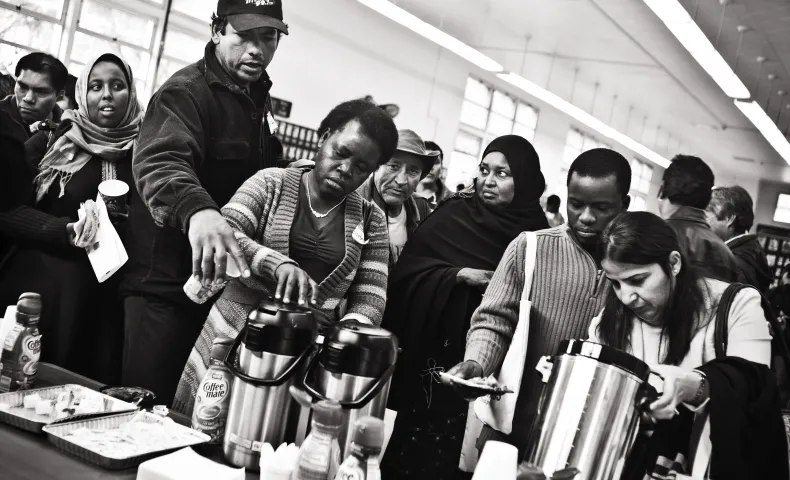 Photo by Jena Olson
Photo by Jena Olson
Counting All Californians
“Census Day is the most democratic day on the calendar in this country. It’s a day when every person in this country is counted. It doesn’t matter if you are rich or poor, what color your skin is, whether you have papers or not, or even whether or not you have a home. Everyone gets counted.”
Cathy Cha
As preparations were underway for the 2010 census, the U.S. Census Bureau identified San Diego as the 11th “hardest-to-count” county in the nation. The reason: large numbers of immigrants and refugees who, because of limited English, fear of government and other factors, routinely are undercounted by census-takers.
Recognizing that an undercount in San Diego would have a serious impact on government funding and political representation for the region for years to come, a local foundation initiated an aggressive outreach campaign under the headline, “Hágase Contar,” or “Make Yourself Count.” The campaign set out to enlist and train hundreds of immigrant, border and refugee community leaders in a targeted effort to highlight the importance of participating in the census.
Census results suggest that these efforts were a success, as the decennial tally showed a growth in the San Diego County Hispanic population from 27 percent in 2000 to 32 percent in 2010; communities of color now make up over 50% of the county population. Overall, San Diego’s population was shown to grow by 10 percent, causing it to move up from the third to the second-largest county in the state behind Los Angeles.
John Fanestil, executive director of the San Diego-based Foundation for Change, said his organization could not have launched the “Make Yourself Count/Hágase Contar” campaign on its own. According to Fanestil, the Evelyn and Walter Haas, Jr. Fund was “instrumental” both in providing financial support for the project and in helping his organization gain the attention and support of a variety of other foundations.
“This was a true collaborative effort between the Haas, Jr. Fund and a local social justice foundation to mobilize resources for a campaign to give voice and political clout to hundreds of thousands of immigrants and refugees,” Fanestil said.
Coalition Seeks to Build Welcoming Communities
The Haas, Jr. Fund’s interest in the San Diego effort grew out of its involvement in Grantmakers Concerned with Immigrants and Refugees (GCIR). Program Officer Cathy Cha serves on the GCIR board of directors. She said the collaborative’s goal is to “organize funders so we can make sure we’re sharing ideas and strategies and getting the best results we can.”
The Haas, Jr. Fund and its partners in GCIR became interested in what was happening in San Diego because they viewed the city as a harbinger of broader trends across the state. “San Diego really is the linchpin of the future electorate in California, with large numbers of immigrants and remarkable diversity,” said Fanestil.
To the extent that community groups and their foundation partners can demonstrate successful ways to reach out and engage immigrant, refugee and border communities in the census and other community-building activities in San Diego, then they can create a model for similar work in other places.
“We want to showcase statewide strategies for doing this kind of work so that every community doesn’t have to start from scratch,” Cha said.
The Haas, Jr. Fund’s support for the census work in San Diego was part of a broader GCIR initiative, called California Counts!, aimed at improving the Census count statewide. In all, GCIR raised $9 million from 20 funders to support this work. Among the indicators that these investments paid off: the response rate to the census in California topped that of other states with large immigrant populations, including Texas and New York. Overall, the census showed that California’s Hispanic population grew by 10 percent between 2000 and 2010, a trend that helped enable the state to retain all of its 53 seats in the U.S. House of Representatives even as New York and other states with large immigrant populations lost seats.
Today, the partners in GCIR are building on their 2010 census work to address other priorities. These include expanding citizenship services in communities across the state, including English as a Second Language classes, legal services and assistance with citizenship applications.